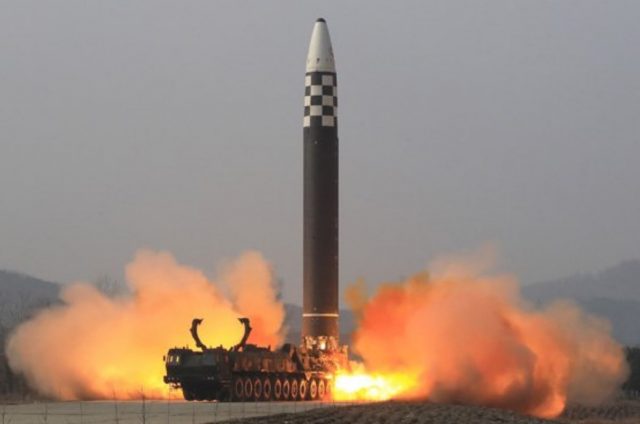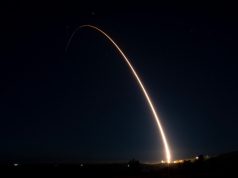
North Korea carried out a launch of a long-range missile on March 24 that landed 170km off north Japan.
The launch of a yet-to-be identified projectile toward the East Sea was confirmed by the militaries of both South Korea and Japan.
North Korea’s most recent launch followed an unsuccessful test from last week during which a missile failed immediately after launch.
Should it be confirmed that Thursday’s test included an intercontinental ballistic missile (ICBM), it would be the first such launch carried out by North Korea since 2017, breaking a self-imposed moratorium on nuclear and ICBM tests.
Japan’s vice defense minister said there was reason to believe North Korea launched a new type of missile.
According to Japan’s defense ministry, the launched ballistic missile flew for about 71 minutes, impacting the sea at about 150 km west of the Toshima Peninsula in Hokkaido. The flight distance is estimated to be about 1,100 km, and the maximum altitude is estimated to have exceeded 6,000 km. As explained, this altitude exceeds the one achieved by the Hwasong-15 ICBM that North Korea tested in 2017.
While yet unconfirmed, the missile launched on Thursday could be the Hwasong-17 ICBM, which is estimated to carry multiple warheads and have a range of more than 13,000 km.
Update: North Korea has confirmed that the launch was a test of the Hwasong-17 ICBM. North Korean media said the launch was performed from the Pyongyang International Airport, the country’s main international airport.

Japan’s defense ministry has also released video footage of one of its F-15 fighter tracking the missile launch.
The latest test brings the total number of missile launches by North Korea this year to 11. The Democratic People’s Republic of Korea (DPRK) has significantly increased the pace and scale of ballistic missile launches since September 2021, including the two intercontinental ballistic missile tests on February 27 and March 5.
In response to the increased North Korean activity, the Pentagon sent an aircraft carrier to the Yellow Sea to conduct an air power demonstration earlier this month. The US Air Force has also increased the activity of intelligence gathering aircraft, such as the RC-135S Cobra Ball, or the RC-135V Rivet Joint reconnaissance platforms with the aim of monitoring North Korean missile sites.


























